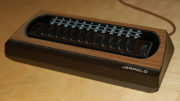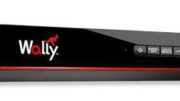Think all the way back to DISH’s booth at the 2015 Consumer Electronics Show. That’s not a typo, I said 2015. Check out my report from then. Or, if you prefer, think all the way back to 2009, when DISH showed its touchpad remote prototype. (Don’t believe me? The internet saves everything, and so here’s a picture.)
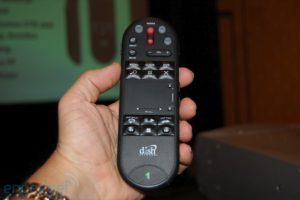
No matter how long we’ve been waiting, the wait is finally (almost) over with the release of DISH’s Voice Remote for Hopper 3 and 4K Joey.
The new remote follows the style set by other devices of having fewer buttons and a large touch-sensitive surface that also doubles as a number pad. It incorporates Siri/GoogleNow-style voice input similar to what DIRECTV uses for Voice Command in their apps.
It’s also a fairly modern learning remote and has a finder feature, two things that no cable DVR remote has, and that will hopefully keep people from wanting to get other universal remotes. That makes it an excellent value. Or at least, it will be.
I know, I keep saying “almost” and “will be” because despite what others in the media are saying, this one’s not… quite… ready to deliver. Solid Signal’s product page is already in place and it will be literally any day when the new remotes come in. I recommend ordering now because stocks will be limited.
I personally played with the prototype remote in 2015 and while Voice Command wasn’t really “there yet” the overall look and feel of the remote was solid even though it was a prototype. I haven’t had a chance to get my hands on a production version, but I expect the same high level of fit and finish, and I expect prices to be considerably lower than other touchpad remotes on the market.
When you look at the evolution of remotes from their days in the 80s and 90s, you see a clear line. I remember having quite a few remotes with rows and columns of nearly identical buttons like this:

which were confusing to anyone who had not touched them before. Labels weren’t standardized and there was a lot of confusion. Universal learning remotes were very rare and when you did get one, the programming process was pretty painful. I had one of these Sony jobs in ’99 and I loved it but it sure was tough to program.
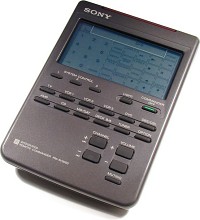
The real turning point was the coming of RCA’s remote for DIRECTV receiver and the TiVo “Peanut” remotes, both of which combined ergonomics and common sense, two things which had previously not existed in a remote at the same time. DIRECTV’s remotes, which looked like this:
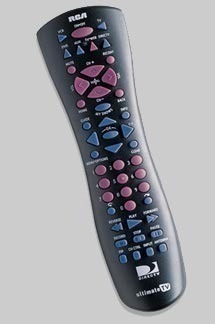
actually won awards for being easy to use, even though they look pretty confusing today, and TiVo’s remote won legions of fans even though it was pretty easy to point it backwards if you weren’t looking at it:

Later remotes followed the pattern of having fewer buttons and more on-screen functionality, sometimes leading to complaints from users, but the trend today is well-established: regular folks, the 99% of users who don’t obsess over their cable and satellite boxes, want simple, easy to understand functionality in a lightweight, one-hand-able package. The mob has spoken, and if you want more function than that, you’ll probably find yourself with an app solution or fairly pricey universal remote. For the majority, though, a simple solution like DISH’s Voice Remote is just what you’ve been waiting for.


